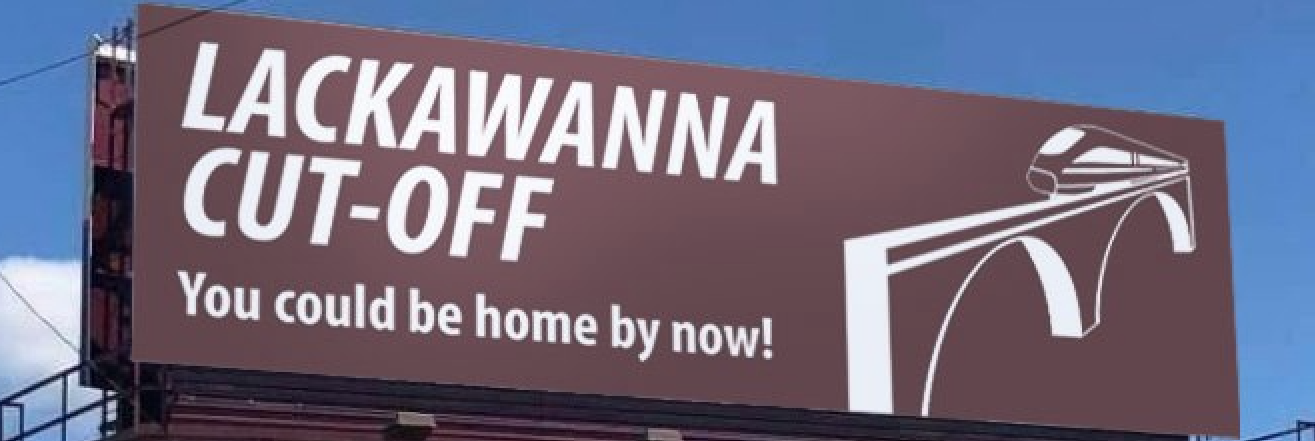During 1905–06, 14 routes were surveyed (labeled sequentially with letters of the alphabet), including several that would have required long tunnels. On September 1, 1906, a route without tunnels was chosen. This New Road (Route “M”) would run from the crest of the watershed at Lake Hopatcong at Port Morris Yard to 2 mi (3.2 km) south of the Delaware Water Gap on the Pennsylvania side of the Delaware River at Slateford.
At 28.45 miles (45.9 km), the line would be about 11 mi (18 km) shorter than the 39.6-mile (63.7 km) Old Road. The new route would have only 15 curves – 42 fewer curves than the Old Road, the elimination of the equivalent of more than four complete circles of curvature – which increased speeds and decreased running time – more so for freight, but for passenger trains as well. The ruling grade was cut in half from 1.1% to 0.55%. The new line would also be built without railroad crossings to avoid collisions with automobiles and horse-drawn vehicles.
Uncertain national economic conditions—specifically, the Panic of 1907, which Truesdale predicted in 1906—delayed the start of construction until August 1, 1908. The project was divided into seven sections, numbered from east to west, one for each contracting company. Sections 3–6 were 5 miles (8 km) each; Sections 1–2 and 7 were of varying lengths. (Theoretically, to divide the 28.45-mile (46 km) line evenly, the seven sections should have been just over four miles each, but that would have placed the Pequest Fill entirely within Section 3 and the two viaducts within Section 7.) The amount and difficulty of the work per mile still varied; the largest share apparently went to David W. Flickwir, whose Section 3 included Roseville Tunnel (originally conceived as a massive cut) and the eastern half of the Pequest Fill. DL&W chief engineer George G. Ray oversaw the project, although given the size and remote location of the project, Assistant Chief Engineer F.L. Wheaton was assigned the task of overseeing the construction in person.
To accommodate the labor gangs, deserted farmhouses were converted to barracks, with tent camps providing additional shelter. These workers, many of whom came from Italy and other foreign countries or other parts of the U.S., were recruited and would move on to other projects after their work on the Cut-Off was completed. These workers were viewed with suspicion by the local populace in Warren, Sussex and Morris counties, with the town of Blairstown going as far as hiring a watchman at $40 per month for the duration of the project. Supervisory personnel and skilled laborers stayed in local hotels, boarding houses, or local farmhouses, usually at rates considered exorbitant for the time and place ($1–2 per day) during the years of construction.
With several thousand men working on the project for over three years, the area all along the Cut-Off, and as far west as Portland, Pennsylvania, benefitted financially.
As many as 30 workers may have lost their lives building the Cut-Off. Most of their names remain unknown because they were registered with their contractor by number only. In 1910, for example, five workers were killed in a single blasting mishap near Port Morris, one of several deadly accidents that involved dynamite. Other workers died in machinery or cable car accidents, or landslides. At least one worker is known to have died of typhoid fever. There were isolated incidences of violence, but amongst the workers themselves, and the local populace appears to have been untouched by these.
The Cut-Off’s reinforced concrete structures (73 in all), which consumed 266,885 cubic yards (204,048 cubic meters) of concrete and 735 tons of steel, include underpasses, culverts, and the two large viaducts on the western end of the line.
Some five million pounds (2,300 t) of dynamite were used to blast the cuts on the line. A total of 14,621,100 cubic yards (11,178,600 cubic meters) of fill material was required for the project, more than could be obtained from the project’s cuts. This forced the DL&W to purchase 760 acres (310 ha) of farmland for borrow pits. Depending on the fill size, material was dumped from trains that backed out onto track on wooden trestles or suspended on cables between steel towers. During construction, several foreign governments sent representatives on inspection tours to study these new techniques.
The Pequest Fill extended west of Andover to Huntsville, New Jersey. It was at its maximum height 110 feet (34 m) tall and was 3.12 miles (5 km) long, requiring 6,625,648 cubic yards (5,065,671 cubic meters) of fill. Armstrong Cut was 100 feet (30 m) deep and 1 mile (1.6 km) long, mostly through solid rock. The line’s deepest cut was Colby Cut (immediately west of what would become Roseville Tunnel) at 130 feet (40 m) deep. The tunnel was not in the original plans for the Cut-Off, and in fact much of the cut above the tunnel had already been blasted when in October 1909 unstable anticline rock was encountered, leading to a decision to abandon the construction of a cut and to blast what would become a 1,040-foot (320 m) tunnel instead. Contractor David W. Flickwir, whose section included Roseville Tunnel and the eastern half of the Pequest Fill, worked his men around the clock during the summer of 1911, reportedly using torches for lighting, when construction fell behind schedule.
Stations were built in Greendell, Johnsonburg and Blairstown. Interlocking towers were built at Port Morris Junction and Greendell, New Jersey, and Slateford Junction in Pennsylvania.
The final cost of the project was $11,065,512 in 1911 US dollars. Although exact modern comparisons of cost are difficult, it is estimated that the same project might cost $1 billion or more today.
